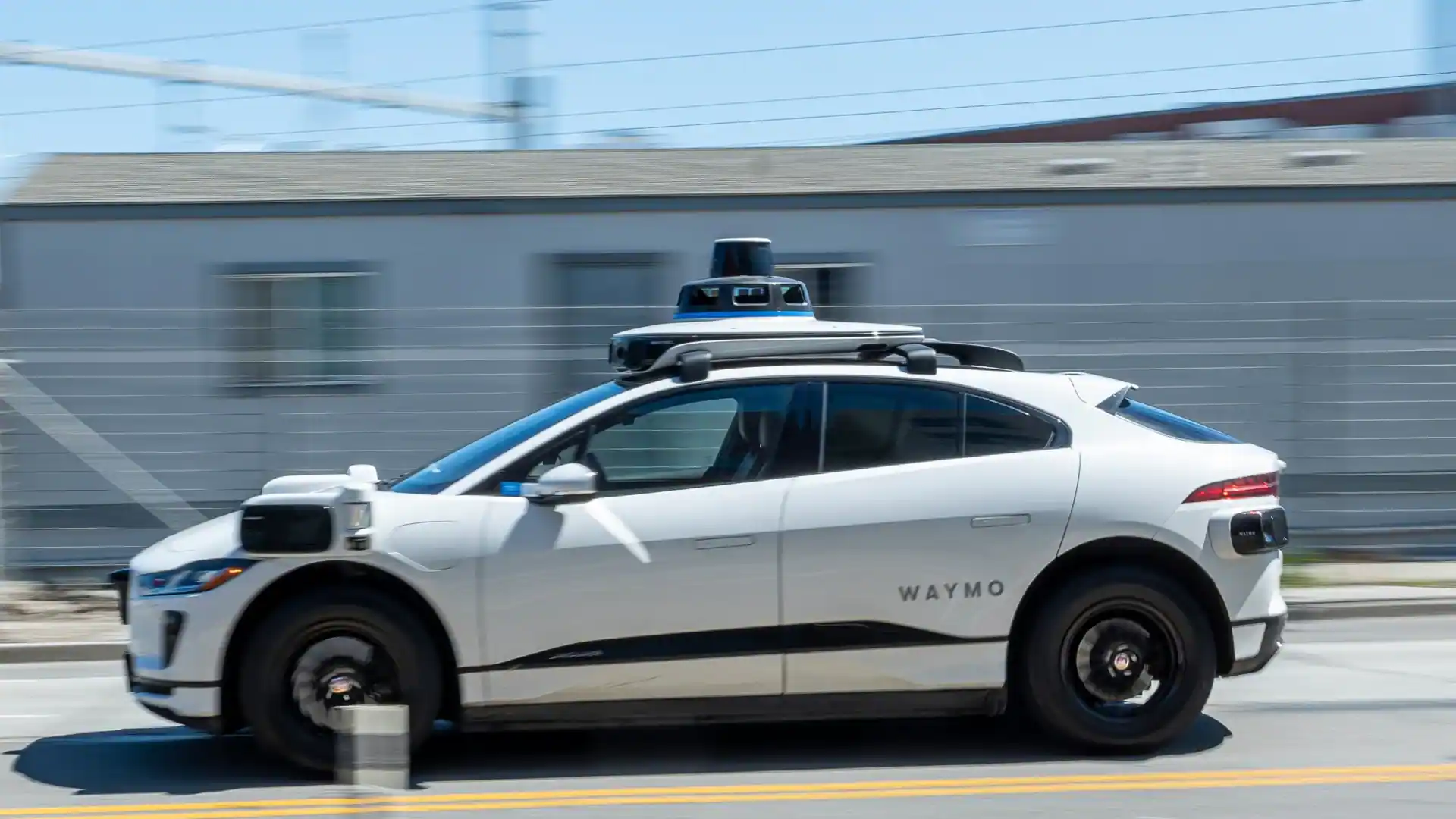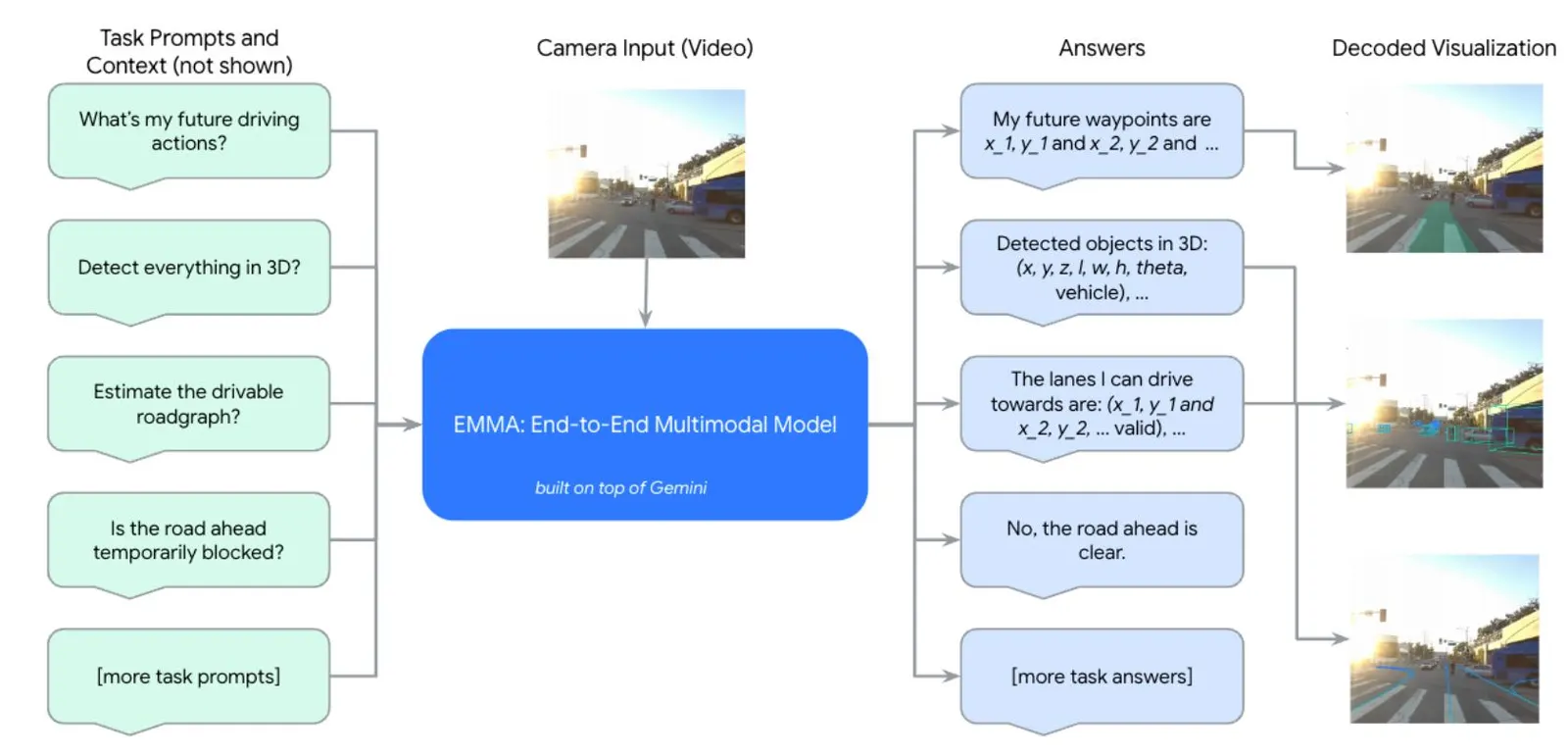Waymo Unveils EMMA: A New Era for Autonomous Driving with AI-Driven Robotaxis
October 30, 2024
Waymo has introduced a new autonomous driving model called EMMA (End-to-End Multimodal Model for Autonomous Driving), which processes sensor data to predict future trajectories, enhancing navigation and obstacle avoidance.
Key features of EMMA include end-to-end learning from raw inputs, a unified language space for non-sensor information, and chain-of-thought reasoning that enhances decision-making by 6.7%.
However, there are concerns about the reliability of generative AI in driving contexts, as models like Gemini can produce inaccurate outputs, raising safety concerns for high-speed autonomous vehicles.
Despite its advancements, EMMA faces limitations, particularly in processing 3D sensor inputs from lidar and radar, which are crucial for safe driving.
Waymo acknowledges the need for further research to address these limitations and enhance the effectiveness of EMMA before its widespread deployment.
Currently, Waymo's self-driving robotaxis are operational, providing 150,000 rides per week, showcasing their success in the autonomous vehicle market.
Initial tests indicate that EMMA has outperformed other academic driving engines, although it has yet to be compared with commercial systems like Waymo's existing driver or Tesla's Full Self-Driving.
Waymo's EMMA model competes with Tesla's approach to autonomous driving, as both companies explore end-to-end systems, yet Waymo currently leads in deploying fully autonomous vehicles.
Drago Anguelov, Waymo's VP and Head of Research, emphasized that EMMA enhances the generalizability and adaptability of driving systems, which is essential for navigating complex environments.
Gemini's extensive training on diverse internet data provides EMMA with real-world knowledge, enabling better adaptation to unfamiliar environments compared to traditional driving systems.
As part of its growth strategy, Waymo is expanding its operations to new cities, including Atlanta and Austin, further solidifying its position in the self-driving market.
This innovative system leverages Google's Gemini AI to improve the capabilities of Waymo's robotaxis, marking a significant shift in their approach to automation.
Summary based on 7 sources
Get a daily email with more Tech stories
Sources

Forbes • Oct 30, 2024
Waymo Builds A Vision Based End-To-End Driving Model, Like Tesla/Wayve
The Verge • Oct 30, 2024
Waymo wants to use Google’s Gemini to train its robotaxis
https://www.techopedia.com/wp-content/themes/twentytwenty-child/images/techopedia-light.svg • Oct 30, 2024
Waymo Hopes to Train Robotaxis on Google’s Gemini AI
PhoneArena • Oct 31, 2024
Waymo to use Google Gemini to help drive autonomous vehicles called 'robotaxis'